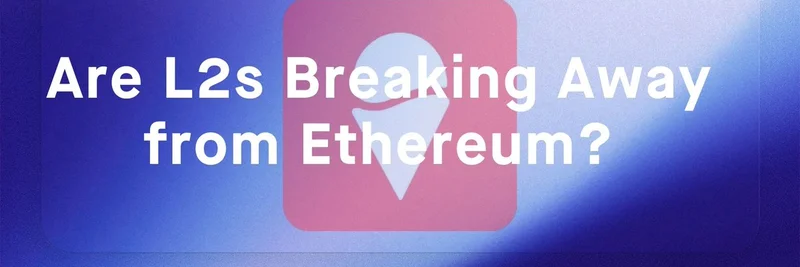If you're deep into the world of meme tokens, you've probably noticed how many of them thrive on Layer 2 (L2) networks like Base and Arbitrum. These L2s were designed to scale Ethereum, making transactions faster and cheaper—perfect for the wild, high-volume trading that meme coins attract. But a recent thread from Marc Arjoon, a research analyst at Blockworks, raises a big question: Are these L2s starting to break away from Ethereum? Let's dive into his insights and explore what this could mean for your favorite meme tokens.
Marc kicks off the thread by pointing out that Ethereum's original vision for rollups—L2 solutions that bundle transactions and settle them back on Ethereum—isn't quite matching reality. Instead, most value flows through external bridges, about two-thirds of assets sit outside Ethereum's security guarantees, and security councils can still override things. Why? Market incentives are pushing users toward quicker, more convenient options.
Take bridges, for example. Users prefer instant external bridges over the canonical ones that take up to seven days to exit. On Base, a hotspot for meme tokens like those inspired by viral trends, around 69% of volume goes through these external bridges. Arbitrum fares even worse at 90%. This means the bulk of activity, including meme token swaps, isn't fully leveraging Ethereum's security.
Digging deeper, it's not just about volume—it's about who uses what. Large entities like exchanges stick to canonical bridges, but everyday users? On Base, 99% of distinct addresses opt for external ones, and on Arbitrum, it's 99.7%. If you're trading meme tokens, you're likely in that majority, prioritizing speed over strict Ethereum alignment.
Then there's asset issuance. It's often cheaper and more incentivized to issue assets directly on the L2 rather than bridging from Ethereum's Layer 1 (L1). Roughly two-thirds of asset value on Base and Arbitrum is issued natively there. For meme tokens, this is huge—many launch directly on these L2s to capture hype without the hassle of L1 fees. But it also means these assets aren't natively enforced by Ethereum's security model.
Marc suggests we might need a new way to evaluate this, building on work from L2Beat. Enter the Ethereum Settlement Score (ESS) from Gelato Network, which measures things like canonical bridge usage, asset composition, and censorship resistance. It's a tool to see how much an L2 truly relies on Ethereum versus going solo with just the branding.
So, how do we fix this divergence? Marc outlines two paths:
Reunification Path: Use zero-knowledge (ZK) proofs to speed up canonical bridges, adopt native rollups that verify directly in Ethereum's engine (ditching security councils), and implement based sequencing for real-time censorship resistance.
Sovereign Path: For apps that don't need Ethereum's full guarantees—like some meme token platforms—go for sovereign rollups. These optimize for throughput, custom governance, and modular data availability (DA) from providers like Celestia, Avail, EigenDA, or even Ethereum itself. Essentially, they're "Rollup L1s" that could supercharge meme token innovation.
For meme token enthusiasts, this shift could be a game-changer. If L2s lean more sovereign, we might see even faster launches, lower fees, and wilder experiments. But it also raises risks—less Ethereum security might mean more vulnerabilities for those moonshot trades. On the flip side, stronger ties back to Ethereum could make meme ecosystems more robust and trustworthy.
Marc wraps up by linking to the full Blockworks Research report, unlocked by Gelato: Are L2s Breaking Away from Ethereum?. If you're building or trading meme tokens, this is worth a read to stay ahead in the blockchain game.
What do you think? Are L2s better off independent, or should they stick closer to Ethereum? Drop your thoughts in the comments below!




